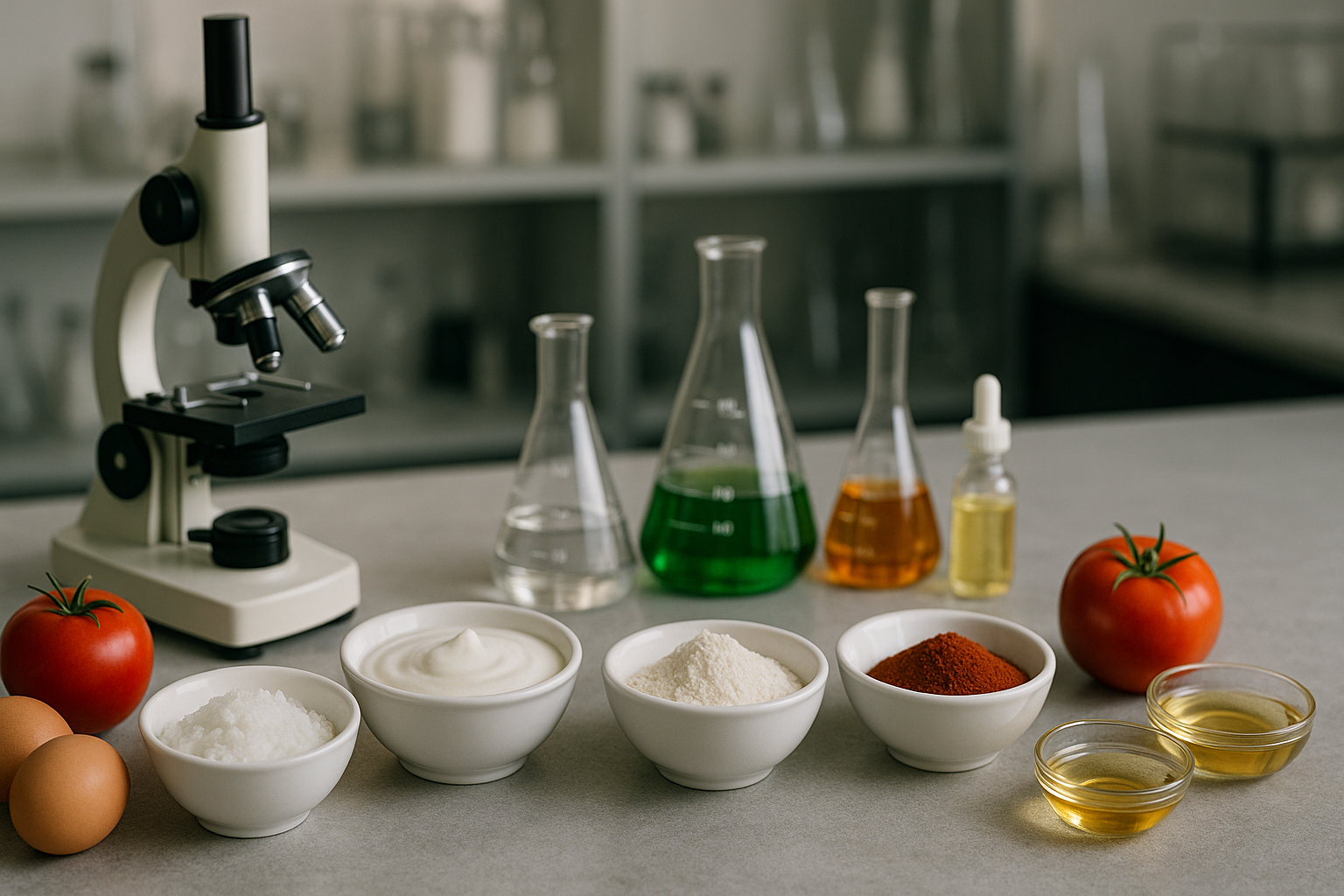
7 Essential Things to Know About Molecular Gastronomy
SUBSCRIBE TO OUR BLOG
Promotions, new products, and recipes.
Molecular gastronomy is one of the most talked about aspects of the modern-day culinary world. It is all about science-backed cooking wherein chefs try to manipulate several essential ingredients on a molecular level to create unexpected flavors, textures, and presentations. For food enthusiast, passionate diners, and aspiring chefs, the insights into cooking comes with come captivating concepts.
Here are the most interesting concepts you need to know about modern gastronomy:
Science-Based Cooking
At its core, molecular gastronomy is the application of scientific principles to cooking. Chefs go to the depths of science to study how essential ingredients react to different conditions such as temperature, pressure, or chemical additives. This allows for precise control over texture, flavor, and appearance. Understanding the science of food opens up a new world of culinary possibilities that traditional cooking methods don’t offer.
Transforms Ingredients in Surprising Ways
Molecular gastronomy transforms ingredients into completely new formats using techniques like:
- Spherification that runs liquids into gel-like spheres that burst in your mouth.
- Foaming that creates light, airy foams from savory or sweet liquids.
- Creating gels from liquids using agents like agar-agar.
These transformations elevate the dining experience, making meals fun, surprising, and memorable.
Requires Technical Knowledge
Molecular gastronomy isn't about improvising with a pinch of this and a dash of that. It demands food science ingredients in exact measurements, controlled environments, and careful timing.
A slight miscalculation in the culinary additives can change the texture or ruin a dish completely. Success in this field requires a mix of culinary creativity and scientific discipline.
More Than Visual Appeal
While modern-day gastronomy is often associated with flashy techniques and interesting kitchen experiments that we come across in various social media platforms. It’s not just about visual appeal. At its best, it enhances the flavor and experience of food without compromising the taste.
The goal is not to distract people with cheap tricks but to make it more meaningful through innovative and elevated experiences. For instance, food thickeners have come to be an important part of the dishes being cooked today to maintain the perfect texture even though it may appear as a visual appeal to some viewers. Apart from this, ingredients like calcium lactate used in food as a stabilizer and thickener also functions as a source of this mineral that is needed as a dietary supplement.
Different Dining Experience
Molecular gastronomy not just engages your taste buds but creates a full sensory experience. Sound, sight, smell, and even temperature are deliberately incorporated to prepare dishes that smoke at the table, pop in your mouth, or melt into a mist. Dining becomes more than eating and it becomes an immersive and memorable on the whole. Using emulsifiers to add smoothness to various dishes is one aspect of making cooking interesting.
Encourage Mindful Eating
Because the dishes are often small, intricate, and visually stimulating, molecular gastronomy encourages diners to slow down, observe, and savor each bite. It challenges expectations and inspires conversation. These moments of mindful dining help people reconnect with food on a deeper level. No wonder hydrocolloids used for creating foams are more than just pleasing to the eyes. If you want to you “What are Hydrocolloids?” please check the user-friendly content.
Changing the Future of Cooking and Eating
Molecular gastronomy is at the forefront of food innovation. It supports sustainability by rethinking how we use ingredients, reduces waste through precise cooking, and inspires plant-based creations with ingredients like xanthan gum that give a good competition to non-vegetarian dishes in terms of flavor and texture. This culinary science is helping shape the future of how we cook, eat, and think about food.
Molecular gastronomy is more than a trend; with several essential ingredients it surely is a transformative approach to cooking that brings science, creativity, and emotion together on a plate. Whether you’re looking to impress guests, explore a new culinary frontier, or simply enjoy food in new ways, diving into molecular gastronomy is a journey worth taking.
Conclusion
Are you keen to push ahead boundaries and want to enter a different world of food? Bring out your culinary creativity with Cape Crystal Brands, your trusted source for premium molecular gastronomy ingredients and rev up every dish from ordinary to extraordinary.
People Also Ask (FAQs)
What Is Molecular Gastronomy?
Molecular gastronomy is a modern culinary discipline that merges food science with cooking techniques. It involves studying how ingredients react under various conditions such as temperature, pressure, or chemical reactions. The aim is to transform textures, enhance flavors, and create multi-sensory experiences. Chefs use this approach to push creative boundaries, resulting in dishes that look and taste unlike anything found in traditional kitchens.
Who Invented Molecular Gastronomy?
The term "molecular gastronomy" was coined in 1988 by Hungarian physicist Nicholas Kurti and French physical chemist Hervé This. They began exploring the scientific principles behind everyday cooking processes, laying the foundation for a new culinary movement. Their work focused on demystifying cooking techniques through chemistry and physics, which helped chefs worldwide, understand and control the science of food for more innovative and precise results.
What Are Common Molecular Gastronomy Techniques?
Some widely used molecular gastronomy techniques include spherification (creating liquid-filled spheres), gelification (turning liquids into gels), foaming (adding light textures to dishes), sous-vide (slow cooking under vacuum), and flash-freezing with liquid nitrogen. These techniques allow chefs to manipulate the texture and presentation of food, creating unique dishes that engage more than just taste—often involving sight, sound, and smell as well.
Can I Practice Molecular Gastronomy At Home?
Yes, you can try molecular gastronomy at home with the right tools and ingredients. Many starter kits are available that include items like syringes, digital scales, and food-safe additives such as agar-agar, xanthan gum, and calcium lactate. While it requires precision and attention to detail, home cooks can successfully explore new textures and flavor combinations with minimal investment, making gourmet-style creations in their own kitchen.
Is Molecular Gastronomy Just About Showy Plating?
No, molecular gastronomy is much more than fancy visuals. While it often results in artistic presentations, its core focus is on improving the taste, texture, and overall experience of food. The scientific methods used are designed to bring out new flavors, control consistency, and elevate a dish’s sensory appeal. It’s about delivering meaningful culinary innovation, not just visual theatrics, and often encourages mindful, appreciative eating.

|
About the Author Ed is the founder of Cape Crystal Brands, editor of the Beginner’s Guide to Hydrocolloids, and a passionate advocate for making food science accessible to all. Discover premium ingredients, expert resources, and free formulation tools at capecrystalbrands.com/tools. — Ed |
Enjoyed this post? Subscribe to The Crystal Scoop
Food-science tips, ingredient know-how, and recipes. No spam—unsubscribe anytime.
- Choosing a selection results in a full page refresh.



